On the Mental and Emotional Dichotomies of the Artist
Chlo & Co Dance is a Bay Area company comprised of Courtney King and Chloë Zimberg, whose project, Tabled, brings together various artists to discuss endemic issues in the arts. The five-panel series ran from January through September 2020. The fifth panel, Strength in Vulnerability: Acknowledging the Mental and Emotional Dichotomies of the Artist, was held on September 14th, 2020 via Zoom and featured Bay Area poet/translator 최 Lindsay Choi, artist/healer Rachel Howe, and choreographer/performance artist/healer randy reyes.
This transcribed and edited version seeks to continue the conversation. Please feel free to get in touch with emmaly@stanceondance.com or chlocodance@gmail.com with your own thoughts on the mental and emotional dichotomies of the artist!
Notes: randy reyes (they/them) has recently renamed themselves estrella/estrellx supernova and will be subsequently referred to as estrella/x in the remainder of the article. Lindsay’s last name is 최; the name she publishes under is “최 Lindsay,” and in her academic life she goes by “Lindsay Choi.”
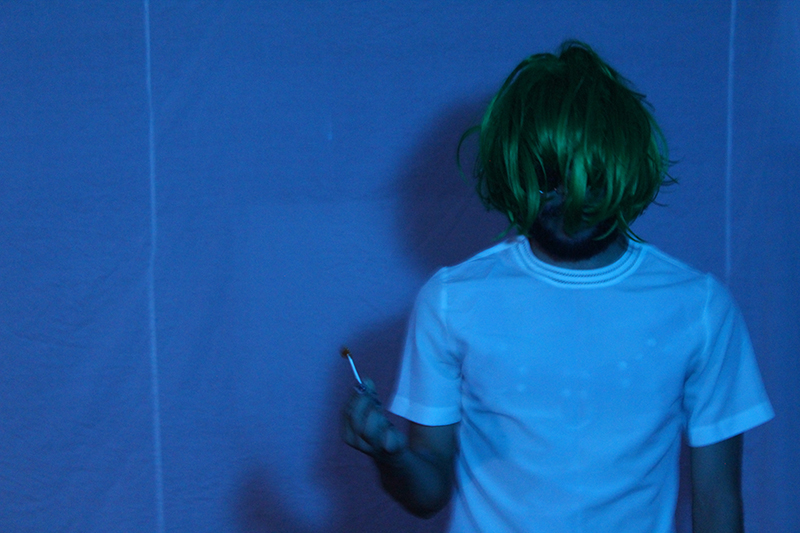
estrella/x, Photo credit: Performance Primers
~~
Rachel Howe (she/her):
My background is in visual arts, and I worked in the art world for a long time. About eight years ago, I embarked on a spiritual journey and brought a healing aspect into my work. I still consider myself a visual artist, but my art is now linked to the idea of healing. I currently work with tarot and astrology. My approach involves changing one’s perceptions and working with how our thoughts affect us and how our emotions determine our behavior.
I feel a lot of pressure as far as having to perform, having to be available, and needing to constantly have new ideas or new things to show everyone. I lived in New York for about 20 years and I recently moved to Los Angeles. My environment has changed drastically. When I first moved here, it was super mellow. Now, with all the things that have happened this past year, it’s not mellow in California at all, but that’s another part of the whole personal health aspect.
estrella/x (they/them):
I am a choreographer, performance artist, and healer. I don’t see healing as separate from my choreography; they are and have always been intertwined. I’ve lived in the Bay Area for the past four years. I’m originally from unceded Lenape territory, or New Jersey. I lived abroad for a bit and now I’m on the East Coast because of the fires. It was a choice based on where I needed to be to feel both grounded and in my body in order to keep my mental health intact. Obviously not everyone can shift their geography.
My choreography is very ritual based. It’s tricky for me to navigate that in relation to the “art market” and who’s watching the work/who the work is for. This past year especially has pushed me into redefining my role as an artist as not just someone who makes work, but as someone who’s reorienting and redefining my values and my beliefs.
최 Lindsay Choi (they/them):
I’m a poet and a grad student. I’m in the process of PhD-ing in English Literature at UC Berkeley. I have a forthcoming book called Transverse. It’s somewhat related to the topic of mental health and the arts. When I was writing the book, I was processing this particularly severe period of PTSD. It occurred to me later, when I looked back over the manuscript, that it captures a lot of early experiences of what some people have called “gender euphoria,” rather than dysphoria.
There is a recurring debate over whether poetry is therapy. I feel inclined towards thinking that poetry is not therapy, although poetry is used sometimes in therapy. I situate myself as an inheritor of a tradition of experimental/avant-garde poetry that was innovated in the Bay Area where the ambition is to make the poem a mind. If the poem is a mind and you succeed in that formal venture, what does this mean?
Rachel:
When I’m doing a tarot reading, the discovery of ideas and the articulation can be therapeutic. To me, being able to articulate something in a specific way that I couldn’t earlier is healing. It helps to find meaning and make sense of the world. I sit down and let my mind discover how to put the words together. It’s almost like there’s already something there that’s invisible and my mind has to discover it. It’s by putting words to this invisible thing that makes it real. And then, it makes it something that a person can engage with, interact with, and learn from. When it’s just an invisible sense, it’s much harder to interact with.
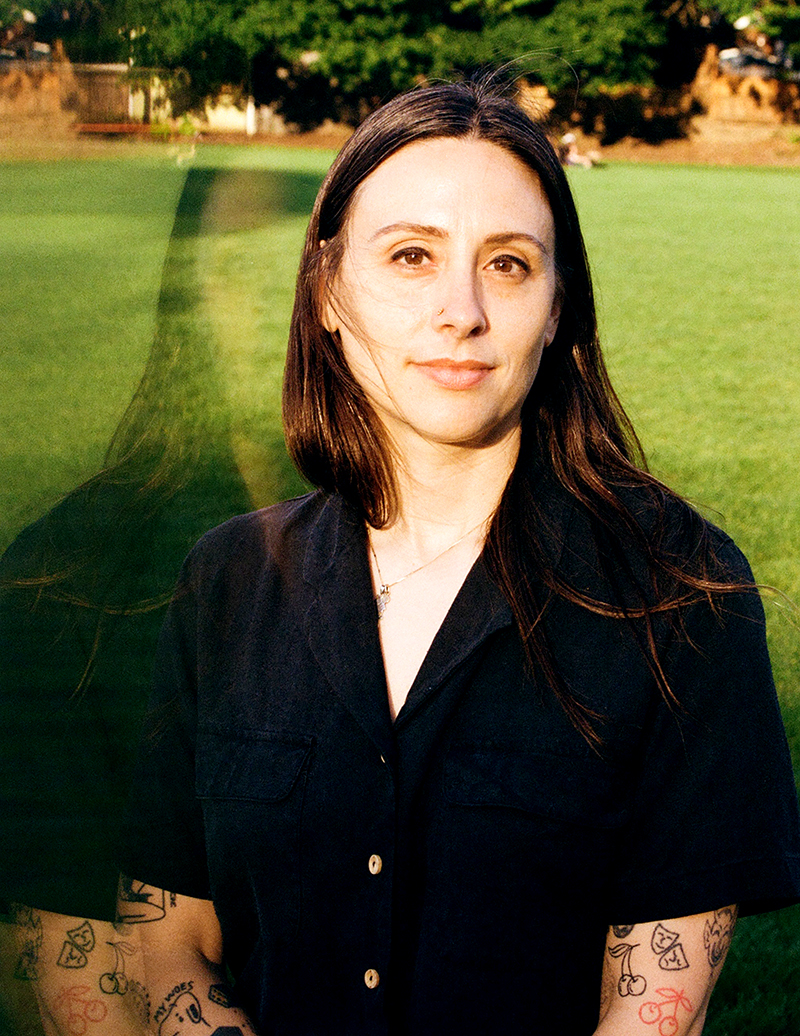
Rachel Howe, Photo credit: Chloé Jarnac
최 Lindsay:
Astrology and tarot are about something that’s quite formally restricted but still has its own semiotic code. You gather a set of objects that exist in discreet relation to each other, and it helps to draw out what already exists in the psyche. The task is to fill in the gaps.
estrella/x:
I’m predominantly in the experimental dance world. I feel this inherited pressure to constantly be productive in order to be successful and get money. I think it’s really important to take breaks. It feels like one of the hardest things for me to do as an emerging artist because there is this attachment to the idea that one must hustle to make a living. But within the dance world specifically, we, as artists, are not getting paid enough to really thrive.
I’ve always had this inner dialogue of, “Maybe I should shift fully into my healing practice,” but I don’t because I can never see myself not performing. The performing aspect is critical. It has supported me through and beyond moments of extreme emotional despair. It’s definitely therapy. It also brings out my capacity for healing and supporting others with their healing processes. If I were to train, for example, in Craniosacral, which I’m considering, it takes a year or so to get certified. But I’m still longing for a durational break in which I can just tune in to what my body is trying to tell me, without the art market involved, without needing to make money, just to rest. It’s been the hardest thing to do, and I’m still struggling with that.
Rachel:
When I lived in New York and worked in the art world, I was very turned off by the idea of turning people into commodities and making them more easily understood to a superficial audience. They’re not interested in the actual people who are making or producing things; they’re just interested in the product. The message is to package ourselves to be more easily understood. Social media adds to that as well: If I can just be one little package that everyone can understand, then I’ll be more successful.
I have an intellectual belief that you don’t have to be constantly producing work to call yourself an artist, choreographer, healer, or writer, but, at the same time, I feel the same pressure that everyone else does to be constantly producing and prove my value. randy, you mentioned being an emerging artist. There is always a fear that if you do step back and take that rest, you’ll disappear and there’ll be someone else to take your place. But there is room for everybody, especially if you’re doing multiple things, because not everybody is the specific combination that you are. It’s conflicting messaging: Be your unique self, but also be something easily digestible for the broader society.
최 Lindsay:
I love that this conversation turned to the pressures that the three of us feel due to the temporalities of capital and how it circulates in the particular forms of art that we specialize in and the orientation towards it that the field itself has. I hadn’t thought about what both of you were talking about in your careers as artists. Part of it has to do with the small press poetry world that I mostly work in, which is not in any way an arts industry. I can’t think of a single poet who makes money from being a poet. Everyone has a day job.
So much of what we call “mental health” is conditioned by what is offered within preexisting systems of capital and positionalities within it. I’m interested in how both of you identify yourselves as healers. I think there’s something to be explored here, what bodywork can offer someone as opposed to the deeply fraught classifications of mental illness within paradigms of pathologizing.
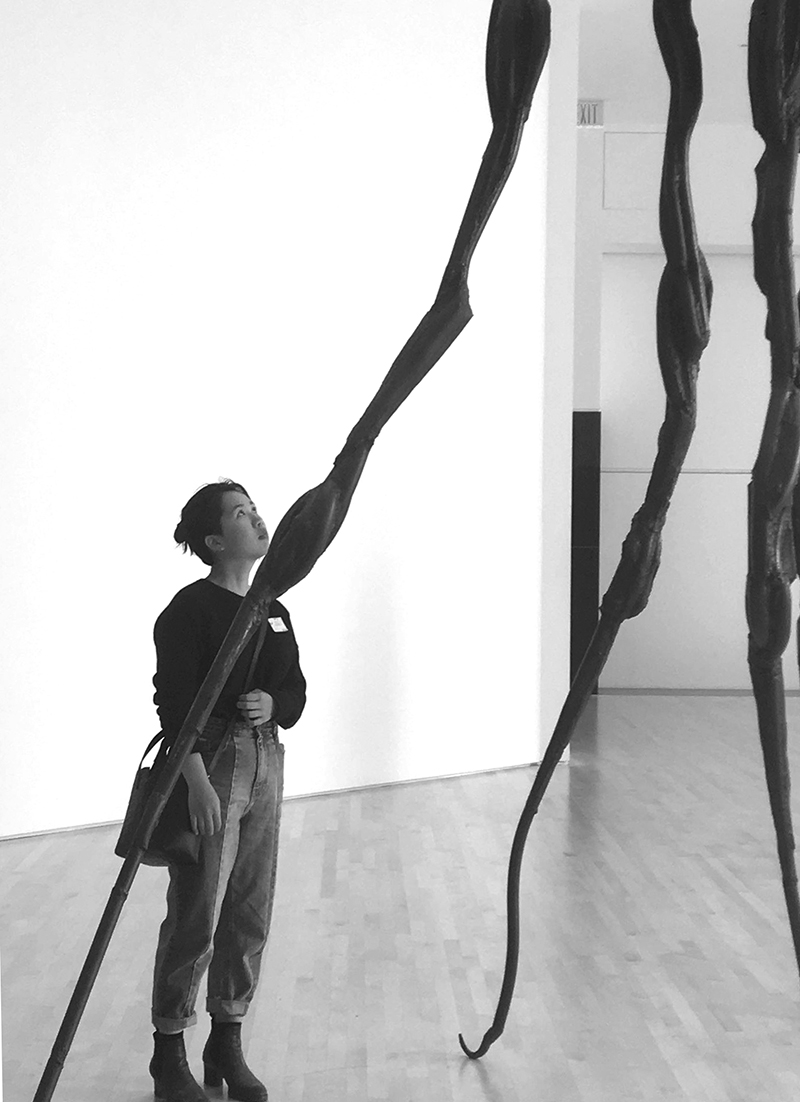
최 Lindsay Choi, Photo credit: J.S. Wu
Rachel:
I agree. I wrestled with a lot of issues when I was younger that traditional mental health therapy did not help and, in some ways, maybe harmed. It wasn’t until I started doing energy work that things started to drastically change for me. Our minds, emotions, energy, and bodies are all constantly engaging with each other. To only treat one does not make sense and doesn’t work. It alienates the rest. The standard is to treat physical ailments as if they have no connection to emotions, to treat emotions as if they’re not stored in the body, to treat thoughts as if they’re not connected to energy, and that just doesn’t make sense. All it does is keep people feeling not whole. I experienced my healing by learning different healing modalities and going to different healers. Some were bodyworkers, some were talk-oriented. I’ve had therapeutic breakthroughs via bodywork without even talking about my emotions.
estrella/x:
My mental health strategies have been a combination of different elements. Initially, it was a lot of talk therapy, but that wasn’t enough. Talking is in the realm of the intellect. Like you were saying Rachel, some things get worked out through drawing or singing, or just through being witnessed. This is why I personally love performance. I’m grateful that I am a performer because it opens this other space for my transformation. There’s room to check in with how my body is making work in relation to what I’m going through, in relation to what’s stimulating me, in relation to who is around me, and in relation to how my heart is doing.
Rachel:
One role of the artist is to be somebody who doesn’t know. The idea that an artist is creating, exploring, discovering, and inventing is attractive to the rest of society, but they don’t realize how difficult or courageous that is to do, especially without support.
Audience Question:
As a nurse, I completely agree with what you’re all discussing. I work in oncology, specifically with bone marrow transplant patients. It’s amazing to see what massage and acupuncture do for my patients. Have you ever worked with patients in the hospital or considered it?
Rachel:
I have not but I would love to do that. Bringing non-traditional types of healing into more traditional institutions would be great. When I was in New York, I did an arts program at Rikers Jail. My original intention was to do energy work there, but they said no, I couldn’t do that because it would involve touching. So I made an arts program that turned into talking about whatever they wanted and holding space for them.
Audience Question:
I’m wondering about the artist’s relation to their expression/practice. What are the conditions of its fulfillment? Is it only fulfilled when it exists for an audience? If so, do you experience loneliness when your expression remains self-contained?
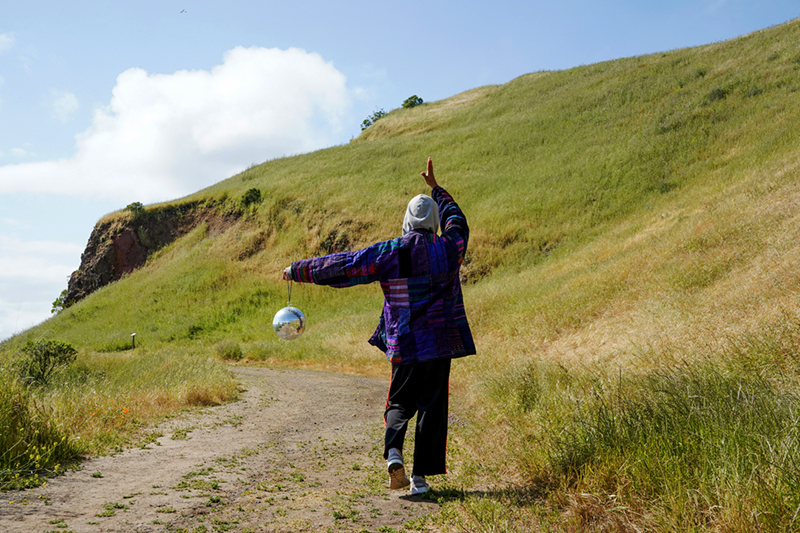
estrella/x, Photo credit: Sophie Schultz
최 Lindsay:
It’s different for an artist whose main vehicle is performance. This is something I take a hard stance on when it comes to poetry: The worst commonly held belief within poetry is that you have to publish to be a poet. This ends up creating a sense of hierarchy within poetry when so many publications are started by random poets.
estrella/x:
Personally, I don’t necessarily need an audience in the room because, even when I’m in a space alone, I feel the space is full of memories. My ancestors accompany me everywhere I go. I always feel like I’m constantly being witnessed on some level by something, someone, nature even if I’m outdoors. This question of audience is important to me. I want my work to be witnessed by QTPOC folks because that’s who I am. When I’ve been abroad in Europe and – this is a huge generalization – it often felt like I was being consumed or extracted. I’m not interested in that.
Audience Question:
Since art and work often need to be capitalized in order to survive, how do you reconcile the sale or sharing of art when it originates from a personal healing process?
Rachel:
There’s this huge block people have about charging money for healing work. It feels very uncomfortable because it’s such a gift and, in an ideal world, it would be an exchange. It would not be something that has a price tag attached to it. Whenever it is a gift, it always feels energetically better. However, as someone who uses the healing world as a resource for myself when I need it, I am willing and grateful to pay people for their time and services. Yes, I monetize my insights so I don’t need a second job and so I can devote myself fully to this work. I feel this strengthens the personal connection and uplifts the people who are receiving it even more.
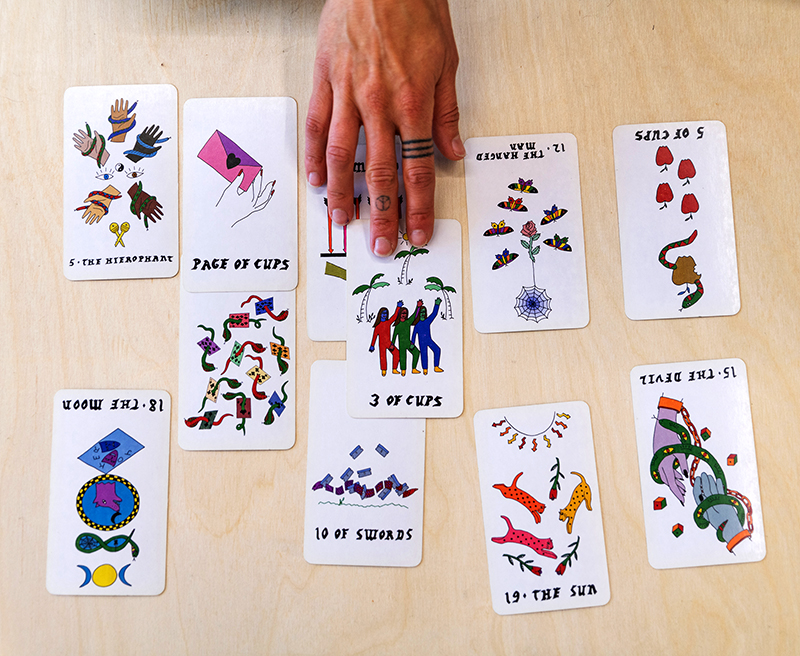
Tarot deck designed by Rachel Howe, Photo credit: Mario Gallucci
~~
To learn more, visit www.chlocodance.com/tabled.
